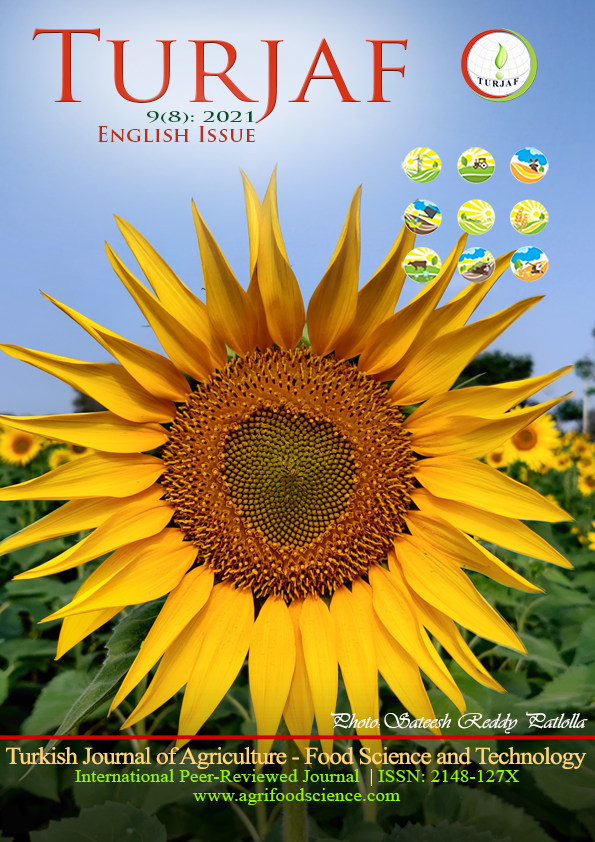Development and Validation of a Simple RP-HPLC-PDA Method for Determination of 18 Polyphenols in Grape Juice and Red Wine
DOI:
https://doi.org/10.24925/turjaf.v9i8.1599-1605.4586Keywords:
Polyphenolic profile, grape product, In-house method validationAbstract
According to the trend of a healthy eating awareness trend, having a potential benefit on human health, some polyphenols like flavonoids, resveratrol, hydroxy-stilbenes, and phenolic acids are in the spotlight. Grapes, and one of the most widespread grape product wine; are among the best sources of these polyphenols. In this study, a highly specific, susceptible, and easy chromatographic method was brought out and validated to determine 18 polyphenols in grape and red wines. For this aim, an HPLC-PDA was used, and the separation was accomplished on an RP-ODS4 column. The method comprised of a mobile gradient phase consisting of A solution (acetic acid in water, pH 2.00) and a mixture of the solution A – acetonitrile (20:80, v/v), at a flow rate of 1.0 ml/min, and PDA detection was carried out at 260,280, 320, and 360 nm. According to the results, it can be said that the program indicated good linearity over the range of 1-40 mg L−1 of phenolics with r2>0.99. The recovery of the 18 phenolics ranges from 83.17% to 119.88% at red wines and 88.20% to 117.83% at grape juices. The method is well precise, with the relative standard deviation (RSD) of the average concentration of the phenolic compounds are ranges from 1.22% to 2.02% at red wines and 1.01% to 2.56% at grape juices.Downloads
Published
04.09.2021
How to Cite
Vural, N., & Yalçınçıray, Özlem. (2021). Development and Validation of a Simple RP-HPLC-PDA Method for Determination of 18 Polyphenols in Grape Juice and Red Wine. Turkish Journal of Agriculture - Food Science and Technology, 9(8), 1599–1605. https://doi.org/10.24925/turjaf.v9i8.1599-1605.4586
Issue
Section
Research Paper
License
This work is licensed under a Creative Commons Attribution-NonCommercial 4.0 International License.









